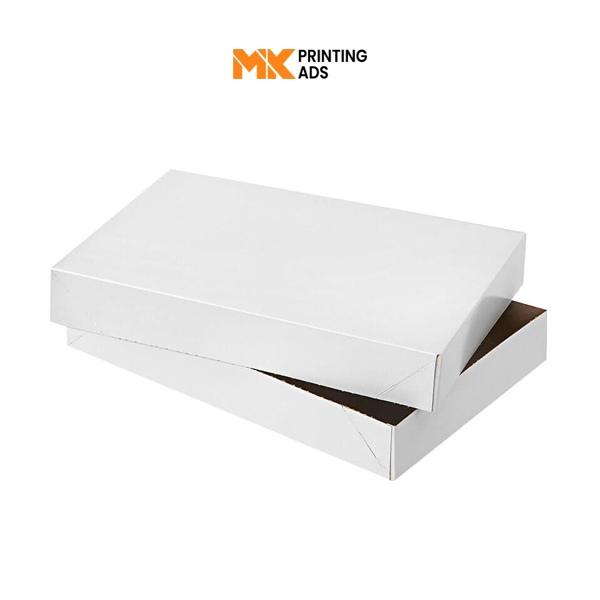“Dress to impress” is a well-known saying, and it applies not only to your personal style but also to the way fashion and apparel are presented. Apparel boxes play a crucial role in showcasing clothing items while also protecting them during storage and transportation. In this comprehensive guide, we’ll explore the world of apparel boxes, covering their types, customization options, sustainability, and the importance of packaging in the fashion industry.
Types of Apparel Boxes
Apparel boxes come in various styles and sizes, each serving a specific purpose in the fashion industry:
- Foldable Apparel Boxes: These boxes are flat-packed and can be easily assembled when needed. They are ideal for retail stores looking to save space and streamline their packaging process.
- Rigid Apparel Boxes: Rigid boxes are sturdy and durable, providing a high-end presentation for clothing items. They often feature a magnetic or ribbon closure and are commonly used for luxury clothing brands.
- Pillow Boxes: Pillow boxes have a distinctive curved shape resembling a pillow. They are compact and can be used for smaller clothing items like lingerie or accessories.
- Garment Bags: Garment bags are typically made of plastic or non-woven fabric and are designed to protect clothing from dust and moisture. These boxes are commonly employed for storing and transporting suits, dresses, and formalwear.
- Tissue Paper and Apparel Sleeves: While not technically boxes, tissue paper and apparel sleeves are essential for protecting clothing during shipping and presentation. Tissue paper is often used to wrap clothing items, while sleeves can hold garments in place within a box.
Customization Options
Customization is a key aspect of apparel boxes, allowing fashion brands to create packaging that aligns with their brand identity:
- Branding: Custom printing allows you to add your brand logo, name, and other branding elements to the box. This reinforces brand recognition and promotes brand loyalty.
- Color: Choose box colors that match your brand’s color scheme or reflect the style of the clothing items inside. Colorful boxes can make a bold statement, while neutral tones convey elegance and simplicity.
- Size and Dimensions: Customize the size and dimensions of your boxes to accommodate different clothing items, from small accessories to larger garments.
- Finishing Touches: Consider finishing touches such as embossing, debossing, foil stamping, or spot UV to add texture and visual appeal to your boxes.
- Inserts and Dividers: To keep clothing items organized and protected, you can include inserts and dividers within the box. These can be customized to fit specific garments.
Sustainability and Eco-Friendly Options
Sustainability is a growing concern in the fashion industry, and apparel packaging is no exception. Many brands are opting for eco-friendly packaging solutions:
- Recyclable Materials: Choose materials that are easily recyclable, such as cardboard or paperboard. These materials can be broken down and reused in the production of new paper products.
- Biodegradable Options: Some brands opt for biodegradable materials, which break down naturally over time without harming the environment. This is a sustainable choice for eco-conscious consumers.
- Minimalist Design: Consider minimalist and eco-friendly designs that use less ink and packaging material. This not only reduces waste but also conveys a commitment to sustainability.
- Reusable Packaging: Explore packaging options that customers can reuse, such as boxes that can be repurposed for storage or gift-giving.
Importance of Packaging in Fashion
Packaging plays a significant role in the fashion industry for several reasons:
- Brand Image: Well-designed packaging reinforces your brand’s image and creates a positive impression on customers. It communicates the quality and style of your clothing items.
- Protection: Packaging protects clothing items from dust, dirt, moisture, and damage during storage and transportation. This is crucial for maintaining product quality.
- Marketing and Promotion: Customized packaging serves as a marketing tool. It can tell the story of your brand, highlight key selling points, and engage customers.
- Customer Experience: Packaging contributes to the overall customer experience. A beautifully packaged clothing item enhances the excitement of receiving a purchase.
- Sustainability and Values: Sustainable packaging demonstrates a commitment to environmental responsibility, which aligns with the values of many consumers today.
Conclusion
Apparel boxes are not just containers; they are a vital part of the fashion industry’s presentation, protection, and marketing strategies. Customization options allow brands to create packaging that reflects their identity and values, while eco-friendly choices contribute to sustainability efforts. In the competitive world of fashion, packaging plays a crucial role in creating a memorable and impressive brand experience. Whether you’re a small boutique or a renowned fashion label, investing in the right custom retail packaging can make a significant impact on your brand’s success and customer satisfaction.
